How Arizona Stands Between Tribes and Their Water
As it negotiates water rights with tribes, Arizona goes to unique lengths to extract concessions that limit tribes’ opportunities for growth and economic development, according to a ProPublica and High Country News investigation.
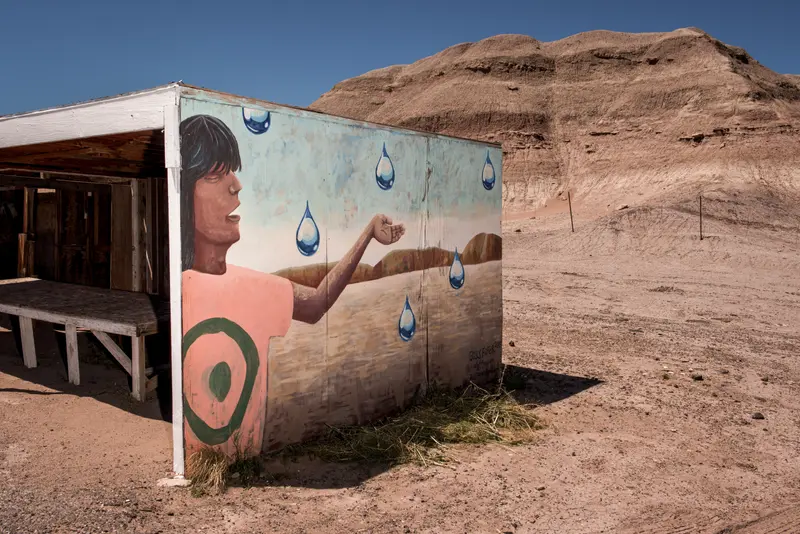
The Dilkon Medical Center, a sprawling, $128 million facility on the Navajo Nation in Arizona, was completed a year ago. With an emergency room, pharmacy and housing for more than 100 staff members, the new hospital was cause for celebration in a community that has to travel long distances for all but the most basic health care.
But there hasn’t been enough clean water to fill a large tank that stands nearby, so the hospital sits empty.
The Navajo Nation has for years been locked in contentious negotiations with the state of Arizona over water. With the tribe’s claims not yet settled, the water sources it can access are limited.
The hospital tried tapping an aquifer, but the water was too salty to use. If it could reach an agreement with the state, the tribe would have other options, perhaps even the nearby Little Colorado River. But instead, the Dilkon Medical Center’s grand opening has been postponed, and its doors remain closed.

For the people of the Navajo Nation, the fight for water rights has real implications. Pipelines, wells and water tanks for communities, farms and businesses are delayed or never built.
ProPublica and High Country News reviewed every water rights settlement in the Colorado River Basin and interviewed presidents, water managers, attorneys and other officials from 20 of the 30 federally recognized basin tribes. This analysis found that Arizona, in negotiating those water settlements, is unique for the lengths it goes to extract concessions that could delay tribes’ access to more reliable sources of water and limit their economic development. The federal government has rebuked Arizona’s approach, and the architects of the state’s process acknowledge it takes too long.
The Navajo Nation has negotiated with all three states where it has land — Arizona, New Mexico and Utah — and has completed water settlements with two of them. “We’re partners in those states, New Mexico and Utah,” said Jason John, the director of the Navajo Nation Department of Water Resources, “but when it comes to Arizona, it seems like we have different agendas.”
The U.S. Supreme Court ruled in 1908 that tribes with reservations have a right to water, and most should have priority in times of shortage. But to quantify the amount and actually get that water, they must either go to court or negotiate with the state where their lands are located, the federal government and competing water users. If a tribe successfully completes the process, it stands to unlock large quantities of water and millions of dollars for pipelines, canals and other infrastructure to move that water.
But in the drought-stricken Colorado River Basin, whatever river water a tribe wins through this process comes from the state’s allocation. (The basin includes seven states, two countries and 30 federally recognized tribes between Wyoming and Mexico.) As a result, states use these negotiations to defend their share of a scarce resource. “The state perceives any strengthening of tribal sovereignty within the state boundaries as a threat to their own jurisdiction and governing authority,” said Torivio Fodder, manager of the University of Arizona’s Indigenous Governance Program and a citizen of Taos Pueblo.
While the process can be contentious anywhere, the large number of tribes in Arizona amplifies tensions: There are 22 federally recognized tribes in the state, and 10 of them have some yet-unsettled claims to water.
Federally Recognized Tribal Reservations and Trust Land in Arizona

Federally Recognized Tribal
Reservations and Trust Land
Colorado River
1
Ak-Chin Indian Community
2
Cocopah Indian Tribe
3
Colorado River Indian Tribes
Fort McDowell Yavapai Nation
4
Fort Mojave Indian Tribe
5
Flagstaff
Gila River Indian Community
6
Havasupai Tribe
7
Hopi Tribe
8
Hualapai Indian Tribe
9
Kaibab Band of Paiute Indians
10
ARIZONA
Navajo Nation
11
Pascua Yaqui Tribe
12
Pueblo of Zuni
13
Fort Yuma Quechan Indian Tribe
14
Phoenix
Salt River Pima-Maricopa
Indian Community
15
16
San Carlos Apache Tribe
17
San Juan Southern Paiute Tribe*
Gila River
18
Tohono O'odham Nation
19
Tonto Apache Tribe
20
White Mountain Apache Tribe
Tucson
21
Yavapai-Apache Nation
22
Yavapai-Prescott Indian Tribe

Federally Recognized Tribal
Reservations and Trust Land
Colorado R.
1
Ak-Chin Indian Community
Cocopah Indian Tribe
2
Colorado River Indian Tribes
3
4
Fort McDowell Yavapai Nation
Fort Mojave Indian Tribe
5
Flagstaff
Gila River Indian Community
6
Little Colorado R.
7
Havasupai Tribe
8
Hopi Tribe
9
Hualapai Indian Tribe
Kaibab Band of Paiute Indians
10
ARIZONA
Central
Navajo Nation
11
Project
Arizona
12
Pascua Yaqui Tribe
Phoenix
Pueblo of Zuni
13
Fort Yuma Quechan Indian Tribe
14
Gila R.
Salt River Pima-Maricopa
Indian Community
15
San Carlos Apache Tribe
16
Tucson
17
San Juan Southern Paiute Tribe*
Tohono O'odham Nation
18
Tonto Apache Tribe
Yavapai-Apache Nation
19
21
Yavapai-Prescott Indian Tribe
White Mountain Apache Tribe
20
22
The state — through its water department, courts and elected officials — has repeatedly used the negotiation process to try to force tribes to accept concessions unrelated to water, including a recent attempt to make the state’s approval or renewal of casino licenses contingent on water deals. In these negotiations, which often happen in secret, tribes also must agree to a state policy that precludes them from easily expanding their reservations. And hanging over the talks, should they fail, is an even worse option: navigating the state’s court system, where tribes have been mired in some of the longest-running cases in the country.
Arizona creates “additional hurdles” to settling tribes’ water claims that don’t exist in other states, said Anne Castle, the former assistant secretary for water and science at the U.S. Department of the Interior. “The tribes haven’t been able to get to settlement in some cases because Arizona would impose conditions that they find completely unacceptable,” she said.
Neither Gov. Doug Ducey, a Republican who left office in January after two terms, nor his successor, Democratic Gov. Katie Hobbs, responded to requests for comment on the state’s approach to water rights negotiations. The Arizona Department of Water Resources, which represents the state in tribal water issues, declined to answer a detailed list of questions.
Shirley Wesaw, a citizen of the Navajo Nation, lives near the yet-to-open Dilkon Medical Center. She eagerly watched as it was built, anticipating a time when her elderly parents would no longer have to spend hours in the car to see their doctors off the reservation after it was completed in June 2022. But Wesaw is familiar with the difficulty accessing water in the area. Shared wells are becoming less reliable, she said. It’s most difficult during the summer, when some of her relatives have to wake up as early as 2 a.m. to ensure there’s still water to draw from a community well.
“When it’s low, there’s a long line there,” Wesaw said, “and sometimes it runs out before you get your turn to fill up your barrels.”
Pipe DreamOne impact of Arizona’s negotiating strategy was particularly evident at the outset of the pandemic.
In May 2020, as the Navajo Nation faced the highest COVID-19 infection rate in the country, the tribe’s leaders suspected that their limited clean water supply was contributing to the virus’ spread on the reservation. They sent a plea for help to Ducey, the governor at the time.
More than a decade earlier, as the tribe was negotiating its water rights with New Mexico, Arizona officials inserted into federal legislation language blocking the tribe from bringing its New Mexico water into Arizona until it also reaches a settlement with Arizona. John, with the tribe’s water department, said the state “politically maneuvered” to force the tribe to accept its demands.
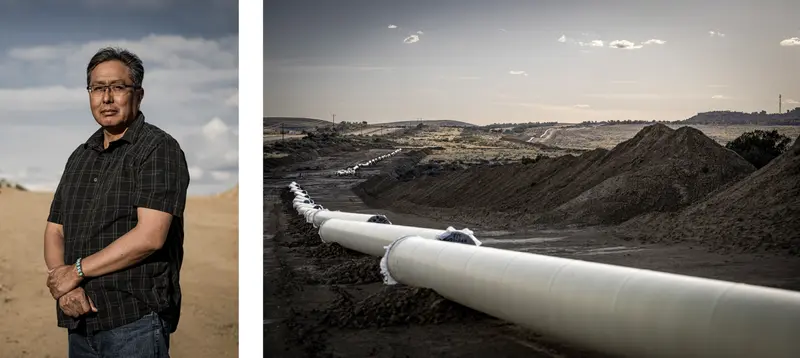
A multibillion-dollar pipeline that the federal government is building will connect the Navajo Nation’s capital of Window Rock, Arizona, to water from the San Juan River in New Mexico. But without a settlement in Arizona, the pipe can’t legally carry the water. The restriction left the tribe waiting for new sources of water, which, during the pandemic, made it difficult for people to wash hands in communities where homes lacked indoor plumbing.
“For the State of Arizona to limit the access of its citizens to drinking water is unconscionable, especially in the face of the coronavirus pandemic,” then-Navajo President Jonathan Nez and Vice President Myron Lizer wrote to the governor. Nez and Lizer included with their letter a proposed amendment that would change a single sentence in the law. They asked Ducey to help persuade Congress to pass that amendment, allowing enough water for tens of thousands of Diné residents to flow onto the reservation.
Arizona rejected the request, according to multiple former Navajo Nation officials.
The Department of Water Resources did not provide ProPublica and High Country News with public records related to the state’s denial of the Navajo Nation’s request for help getting its water to Window Rock. Hobbs’ office said it could not find the communications relating to the incident.
Land and WaterNearly half of the tribes in Arizona are deadlocked with the state over water rights.
The Pascua Yaqui Tribe has 22,000 enrolled members, but limited land and housing allow only a third to live on its 3.5-square-mile reservation on the outskirts of Tucson. A subdivision still under construction has just started to welcome some Pascua Yaqui families to live on the reservation. But the new development isn’t nearly enough to house the more than 1,000 members on a waiting list. More than 18,000 additional acres of land would be needed to accommodate the tribe’s future population, according to a 2021 study it commissioned.
But Arizona has used water negotiations with tribes to curtail the expansion of reservations in a way no other state has.
It’s state policy that, as a condition of reaching a water settlement, tribes agree to not pursue the main method of expanding their reservations. That process, called taking land into trust, is administered by the Bureau of Indian Affairs and results in the United States taking ownership of the land for the benefit of tribes. Alternatively, tribes can get approval from Congress to take land into trust, but that process can be more fraught, requiring expensive lobbying and travel to Washington, D.C.
The policy will force the Pascua Yaqui “to choose between houses for our families and water certainty for our Tribe and our neighbors,” then-Chairman Robert Valencia wrote to the Department of Water Resources in 2020. “While we understand that our Tribe must make real compromises as part of settlement, this sort of toll for settlement that is unrelated to water is unreasonable and harmful.”
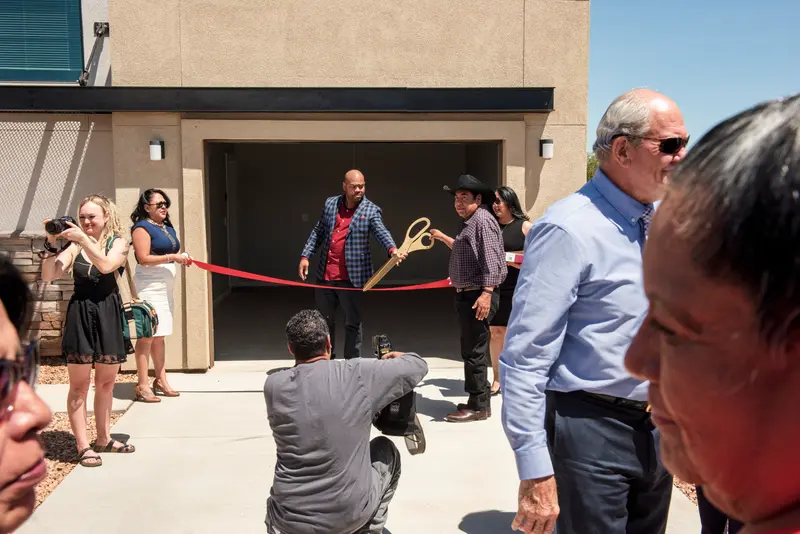
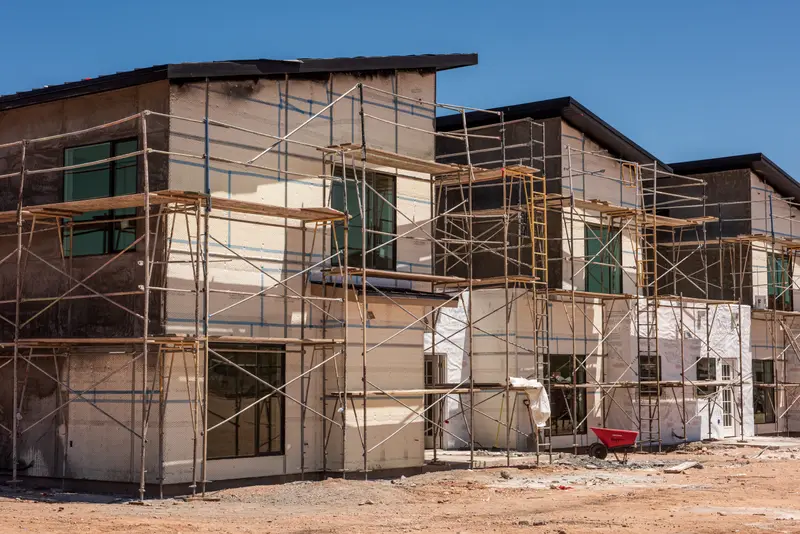
For tribes across Arizona and the region, building homes and expanding economic opportunities to allow their members to move to reservations is a top priority.
The Pueblo of Zuni was the first tribe to agree to Arizona’s land requirement when it settled its water rights with the state in 2003. The Zuni had hoped to take into trust more land they own near their most sacred sites in eastern Arizona, but that will now require an act of Congress. Since the Zuni settlement, all four tribes that have settled water rights claims with Arizona have been required to agree to the same limit on expansion, according to ProPublica and High Country News’ review of every completed settlement in the state.
In a 2020 letter, the Navajo Nation’s then-attorney general called the state’s opposition to expansion “an invasion of the Nation’s sovereign authority over its lands and so abhorrent as to render the settlement untenable.”
The Department of the Interior, which negotiates alongside tribes, has agreed, objecting on multiple occasions in statements to Congress to Arizona’s use of water negotiations to limit the expansion of reservations. In 2022, as the Hualapai Indian Tribe settled its rights, the department called the state’s policy “contrary to this Administration’s strong support for returning ancestral lands to Tribes.”
Tribes in Arizona Often Wait Decades To Secure Water Rights
Seven federally recognized tribes in Arizona have filed but not settled any of their claims for water rights. The settlement process can take decades and wind through courts and Congress.

1960
1980
2000
2020
Salt River Pima-Maricopa
Indian Community
Year water rights
claim was filed
Year first water rights
were recognized
Cocopah Indian Tribe
Colorado River Indian Tribes
Fort Mojave Indian Tribe
Fort Yuma Quechan Indian Tribe
Ak-Chin Indian Community
Tohono O'odham Nation
Gila River Indian Community
Yavapai-Prescott Indian Tribe
White Mountain Apache Tribe
Fort McDowell Yavapai Nation
Water rights
remain unsettled
Pueblo of Zuni
Yavapai-Apache Nation
San Carlos Apache Tribe
Hualapai Indian Tribe
Hopi Tribe
Tonto Apache Tribe
Navajo Nation
Pascua Yaqui Tribe
San Juan Southern Paiute Tribe
Havasupai Tribe
Kaibab Band of Paiute Indians
Has not filed a claim yet.

Year water rights claim was filed
Year first water rights were
recognized.
Water rights
remain
unsettled
1960
1980
2000
2020
Salt River Pima-Maricopa Indian Community
Cocopah Indian Tribe
Colorado River Indian Tribes
Fort Mojave Indian Tribe
Fort Yuma Quechan Indian Tribe
Ak-Chin Indian Community
Tohono O'odham Nation
Gila River Indian Community
Yavapai-Prescott Indian Tribe
White Mountain Apache Tribe
Fort McDowell Yavapai Nation
Yavapai-Apache Nation
Pueblo of Zuni
San Carlos Apache Tribe
Hualapai Indian Tribe
Hopi Tribe
Tonto Apache Tribe
Navajo Nation
Pascua Yaqui Tribe
San Juan Southern Paiute Tribe
Havasupai Tribe
1960
1980
2000
2020
Kaibab Band of Paiute Indians
Has not filed a claim yet.
Tom Buschatzke, director of the state’s Department of Water Resources, explained the reasoning behind Arizona’s stance to state lawmakers, noting it’s based on Arizona’s interpretation of a century-old federal law that Congress is the only legal avenue for tribes to take land into trust. “The idea of having that tribe go back to Congress is so that there’s transparency in a hearing in front of Congress so the folks in Arizona who might have concerns can get up and express those concerns and then Congress can act accordingly,” he told the Legislature, adding that the Bureau of Indian Affairs’ process, meanwhile, puts the decision in “the hands of a bureaucrat in Washington, D.C.”
The state water department has even gone outside water rights negotiations to challenge reservation expansion without an act of Congress. When the Yavapai-Apache Nation filed a trust land application with the Bureau of Indian Affairs in 2001, the Department of Water Resources fought it, according to documents obtained via a public records request. The department went on to argue in an appeal that the trust land transfer would infringe on other parties’ water rights. A federal appellate board eventually ruled in favor of the tribe, but the state’s opposition contributed to a five-year delay in completing the land transition.
Pascua Yaqui Chairman Peter Yucupicio has watched non-Indigenous communities grow as he works to secure land and water for his tribe. “They put the tribes through the wringer,” he said.
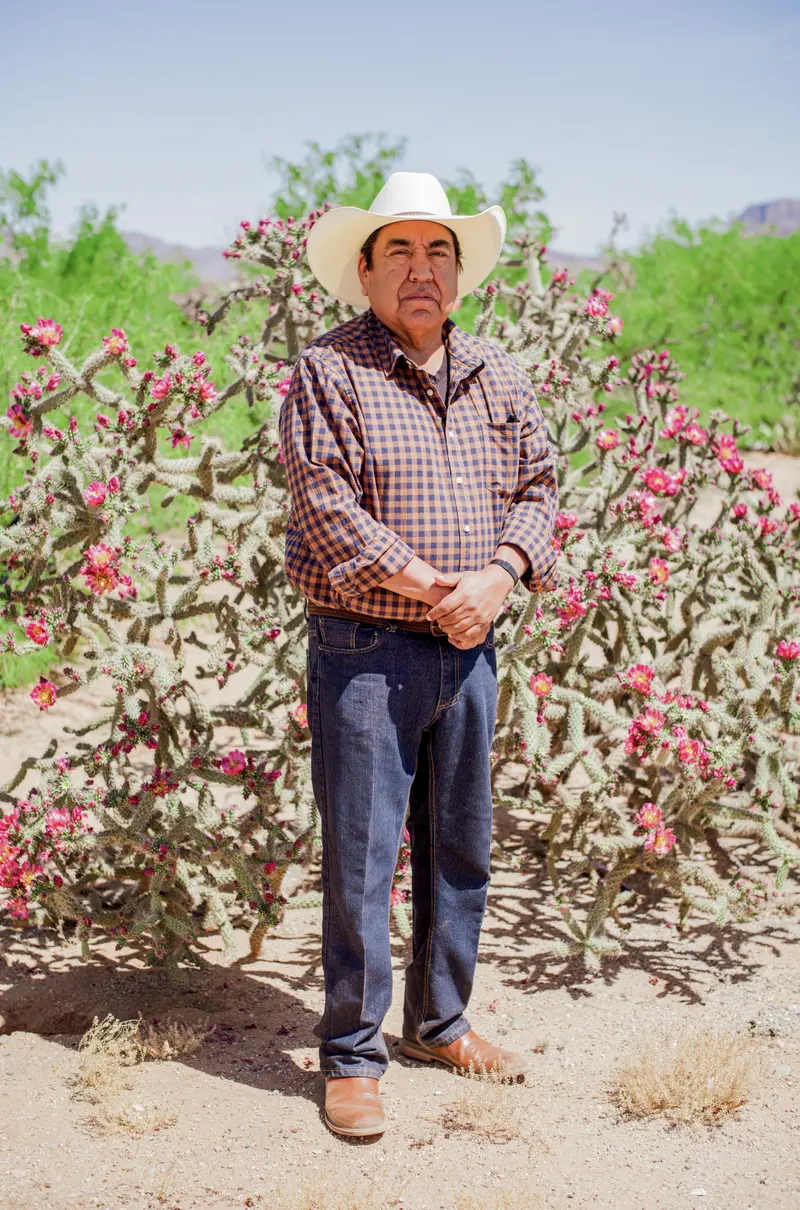
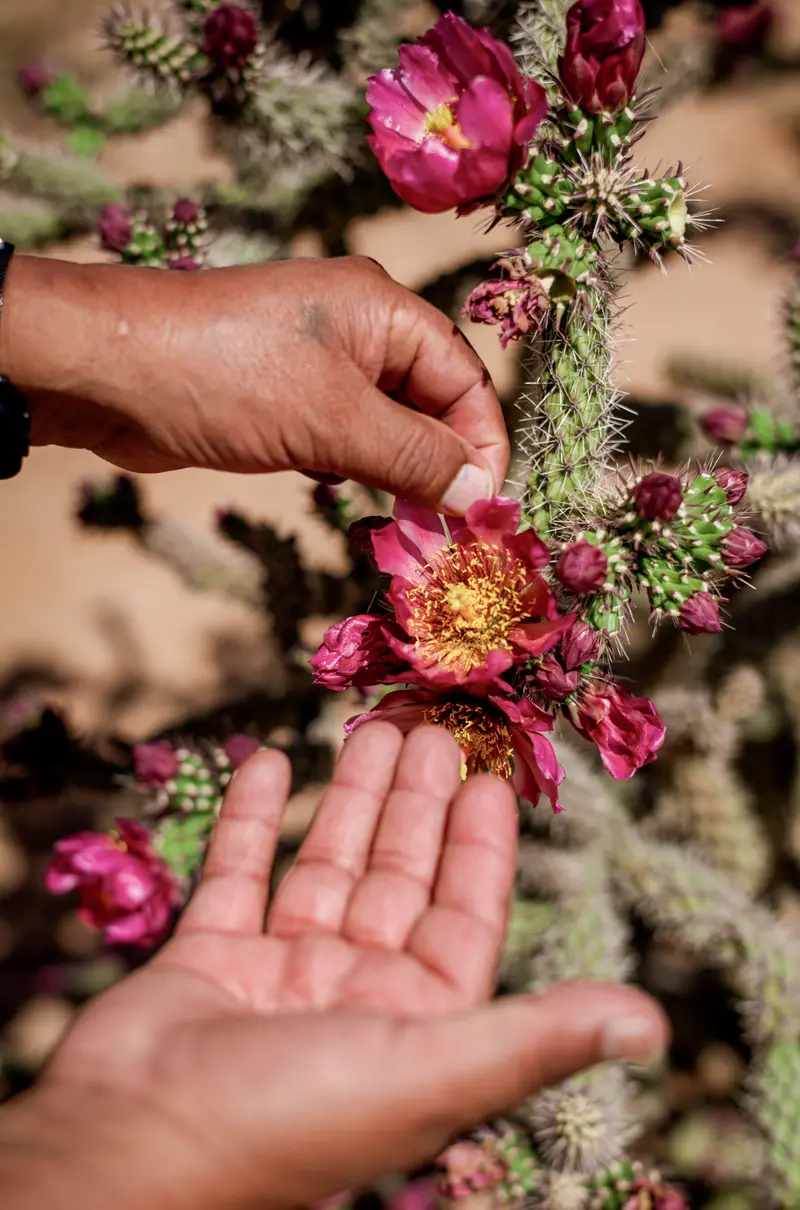
No one has defined the terms of water negotiations between Arizona and tribes more than former U.S. Sen. Jon Kyl.
Before entering politics, he was a long-time attorney for the Salt River Project, a water and electric utility serving parts of metro Phoenix. During that time, he lobbied for and consulted on state rules that force tribes to litigate water disputes in state court if they’re unable to reach a settlement. After landing in the Senate, Kyl and his office oversaw meetings where parties hashed out disputes, and he viewed his role as that of a mediator. He helped negotiate or pass legislation for the water rights of at least seven tribes.
“I wasn’t taking a side,” Kyl told ProPublica and High Country News, “but I was interested in seeing if they could all reach agreements.”
Tribes, though, often didn’t see him as a neutral party, pointing especially to his handling of negotiations for the Navajo Nation and the Hopi Tribe. He was shepherding a proposed settlement for the tribes through Congress in 2010 when he withdrew support, saying the price of the infrastructure called for in the proposal was too high to get the needed votes. A 2012 version of the tribes’ settlement also died after he added an extension to allow a controversial coal mine to continue operating.
Even when Kyl wasn’t directly involved, tribes were pushed to accept concessions, including limits on how they used their water. Settlements across the basin, including in Arizona, typically contain limits on how much water tribes can market, leaving unused water flowing downstream to the next person in line to use for free.
And several tribes in Arizona were asked to give up the ability to raise legal objections if other users’ groundwater pumping depleted water underneath their reservation.

Tribes also often have had to trade the priority of their water — the order in which supply is cut in times of shortage like the current megadrought — to access water. The Bureau of Reclamation recently proposed drastic cuts to Colorado River usage, and, in one scenario based on priority, a quarter of the proposed cuts to allocations would come from tribes in Arizona.
“Some of the Native American folks had a hard time with the concept that they had to give up rights in order to get rights,” Kyl said, adding that tribes risked getting nothing if they kept holding out. “If you’re going to resolve a dispute, sometimes you have to compromise.”
Given the long list of terms Arizona typically pursues, some tribes have been hesitant to settle — which can leave them with an uncertain water supply — so the state has tried to push them.
In 2020, Arizona legislators targeted the casino industry — the economic lifeblood of many tribes. Seven Republicans, including the speaker of the House and Senate president, introduced a bill to bar tribes from obtaining or renewing gaming licenses if they had unresolved water rights litigation with the state. The bill failed, but Rusty Bowers, the House speaker at the time, said the legislation was intended to put the state on a level playing field with tribes. “Where is our leverage on anything?” Bowers said. If tribes weren’t using the water, then others would do so amid a drought in the growing state, he said.
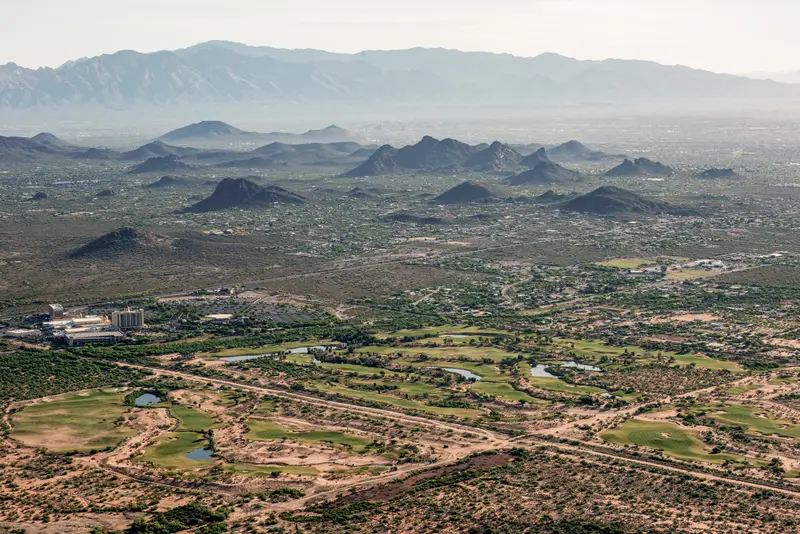
The state’s economic and population growth has presented tribes with other challenges. They must now negotiate not only with the state and federal governments but also with the businesses, cities and utilities that have in the interim made competing claims to water.
It has taken an average of about 18 years for Arizona tribes to reach even a partial water rights settlement, according to a ProPublica and High Country News analysis of data collected by Leslie Sanchez, a postdoctoral fellow at the U.S. Forest Service’s Rocky Mountain Research Station, who researches the economics of tribal water settlements. The Arizona tribes that filed a claim but are still in the process of settling it have been waiting an average of 34 years.
Chairman Calvin Johnson of the Tonto Apache Tribe — with a small reservation next to the Arizona mountain town of Payson — remembers as a child watching his uncle, then the chairman, begin the fight in 1985 to get a water rights settlement.
Still without a settlement, the tribe hopes to one day plant orchards for a farming business, build more housing to support its growing population and reduce its reliance on Payson for water, Johnson said. But, faced with Arizona’s demands, the tribe has not yet accepted a deal.
“The feeling that a lot of the older tribal members have is that it’s not ever going to happen, that we probably won’t see it in our lifetime,” Johnson said.
Turning to the CourtsTribes that hope to avoid Arizona’s aggressive tactics can instead go to court — an even riskier gamble that drags on and takes the decision-making out of the hands of the negotiating parties.
The Kaibab Band of Paiute Indians is the only federally recognized tribe in Arizona yet to file a claim for its water. It has a reservation near the North Rim of the Grand Canyon, but with 400 members and minimal resources, the tribe would face a daunting path forward. To settle its rights, the tribe would have to engage in court proceedings to divvy up Kanab Creek, the only waterway that crosses its reservation; bring to the courtroom anyone with a potential competing claim to the creek’s water; find money to complete scientific studies estimating historical flows; and then, because the waterway spans multiple states, possibly face interstate litigation before the Supreme Court.
“It’s about creating and sustaining that permanent homeland,” said Alice Walker, an attorney for the band, but the path between the tribe and that water “boils down to all of those complex, expensive steps.”
Arguing before the Supreme Court on behalf of Arizona and other parties in 1983, Kyl successfully defended a challenge to a law called the McCarran Amendment that allowed state courts to take over jurisdiction of tribal water rights claims.
“Tribes are subject to the vagaries of different state politics, different state processes,” explained Dylan Hedden-Nicely, director of the Native American Law Program at the University of Idaho and a citizen of the Cherokee Nation. “As a result, two tribes with identical language in their treaties might end up having, ultimately, very different water rights on their reservations.”
Some states, such as Colorado, set up special water courts or commissions to more efficiently settle water rights. Arizona did not. Instead, its court system has created gridlock. Hydrological studies needed from the Department of Water Resources take years to complete, and state laws add confusion over how to distinguish between surface and groundwater.
Two cases in Arizona state court that involve various tribes — one to divide the Gila River and another for the Little Colorado River — have dragged on for decades. The parties, which include every person, tribe or company that has a claim to water from the rivers, number in the tens of thousands. Just one judge, who also handles other litigation, oversees both cases.
Even Kyl now acknowledges the system’s flaws. “Everybody is in favor of speeding up the process,” he said.
After years of negotiations that failed to produce a settlement, the Navajo Nation went to court in 2003 to force a deal. Eventually, the case reached the Supreme Court, which heard it this March. Tribes and legal experts are concerned the court could use the case to target its 1908 precedent that guaranteed tribes’ right to water, a ruling that would risk the future of any tribes with unsettled water claims.
The Navajo Nation, according to newly inaugurated President Buu Nygren, has huge untapped economic potential. “We’re getting to that point in time where we can actually start fulfilling a lot of those dreams and hopes,” he said. “What it’s going to require is water.”
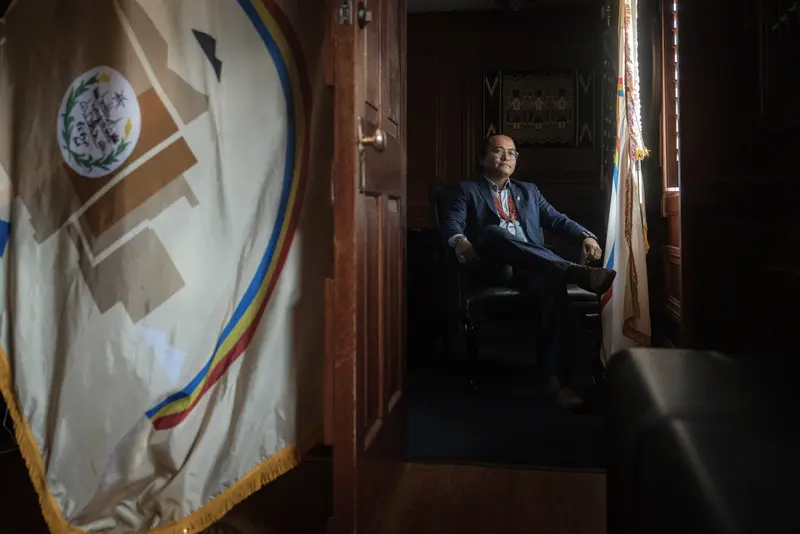
Just across the Arizona-New Mexico border, not far from Nygren’s office in Window Rock, construction crews have been installing the 17 miles of pipeline that could one day deliver large volumes of the tribe’s water to its communities and unlock that potential. Because of Arizona’s changes to the federal law, that day won’t come until the state and the Navajo Nation reach a water settlement.
For now, the pipeline will remain empty.
ProPublica is a nonprofit newsroom that investigates abuses of power. Sign up for Dispatches, a newsletter that spotlights wrongdoing around the country, to receive our stories in your inbox every week.
ProPublica is a nonprofit newsroom that investigates abuses of power. Sign up for Dispatches, a newsletter that spotlights wrongdoing around the country, to receive our stories in your inbox every week.








